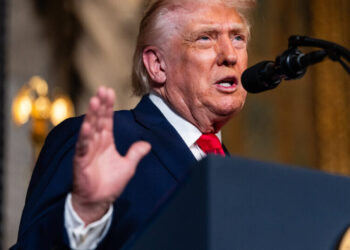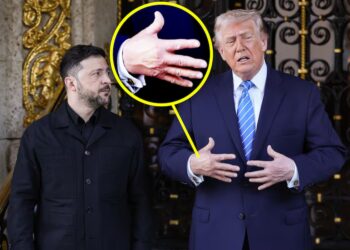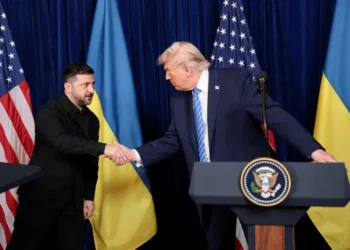Trump Says the U.S. Struck a ‘Big Facility’ in Campaign Against Venezuela
President Trump said in a radio interview that the United States had knocked out “a big facility” last week as...
77-year-old gunman killed after opening fire at Idaho sheriff’s office, injuring 3
A 77-year-old gunman opened fire at an Idaho sheriff’s office — injuring three people before he was killed in a...
Trump’s Bruises Spread in Blow to Leavitt’s ‘Hand Shake’ Claim
President Donald Trump slathered a fresh coat of makeup on his right hand for another round of peace talks with...
Zelensky Slyly Shuts Down Trump’s Tacky Mar-a-Lago Bragging
Volodymyr Zelensky shut down Donald Trump’s Mar-a-Lago touting following their Sunday meeting on the war in Ukraine at the Palm...
North Korea says it tested long-range cruise missiles
SEOUL — North Korea said Monday that it fired long-range strategic cruise missiles into the sea to test the country’s nuclear deterrence,...
‘He’s completely gone’: Internet erupts after Trump’s latest ‘absolutely unhinged’ claim
President Donald Trump is well-known for making statements that stretch the imagination, but his latest claims about the war in...
Major US cities see violent crime surge as national rates plummet significantly in 2025: survey
Violent crime declined nationwide in 2025, but a new survey shows several US cities moving in the opposite direction, reporting increases...
Miranda Lambert says goodbye to beloved 15-year-old rescue dog that’s been ‘on every tour’ she’s done since 2010
Miranda Lambert is saying goodbye to a faithful friend. The country singer, 42, took to Instagram on Sunday to share...
Train Derailment Kills 13 in Mexico
A passenger train derailed in the Mexican state of Oaxaca on Sunday, killing at least 13 people, according to the...
Federal judge dismisses indictment against TikToker shot by ICE, citing constitutional violations
Days ahead of trial, a federal judge has dismissed an indictment against a TikTok streamer shot by ICE earlier this...














